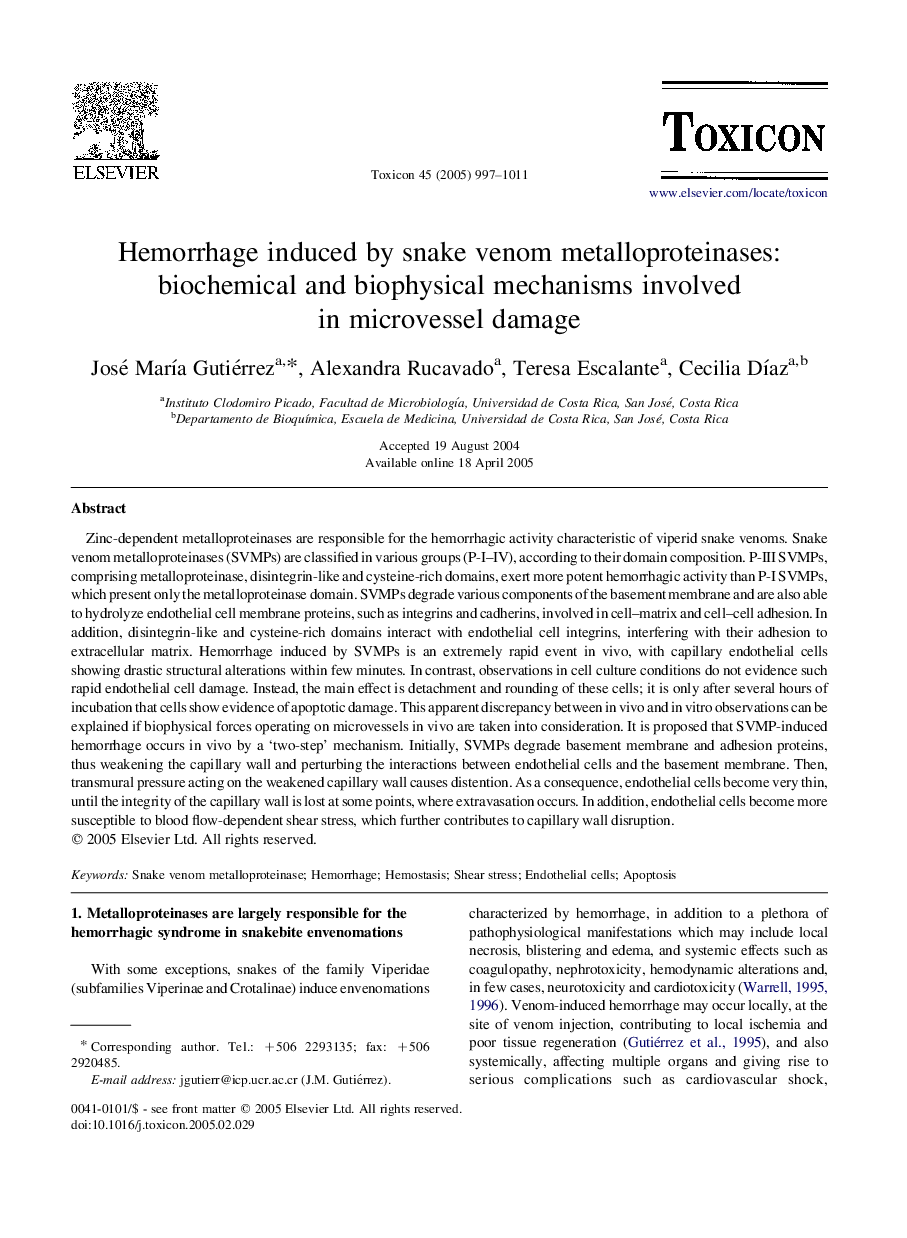| کد مقاله | کد نشریه | سال انتشار | مقاله انگلیسی | نسخه تمام متن |
|---|---|---|---|---|
| 10881635 | 1077304 | 2005 | 15 صفحه PDF | دانلود رایگان |
عنوان انگلیسی مقاله ISI
Hemorrhage induced by snake venom metalloproteinases: biochemical and biophysical mechanisms involved in microvessel damage
دانلود مقاله + سفارش ترجمه
دانلود مقاله ISI انگلیسی
رایگان برای ایرانیان
کلمات کلیدی
موضوعات مرتبط
علوم زیستی و بیوفناوری
بیوشیمی، ژنتیک و زیست شناسی مولکولی
بیوشیمی، ژنتیک و زیست شناسی مولکولی (عمومی)
پیش نمایش صفحه اول مقاله

چکیده انگلیسی
Zinc-dependent metalloproteinases are responsible for the hemorrhagic activity characteristic of viperid snake venoms. Snake venom metalloproteinases (SVMPs) are classified in various groups (P-I-IV), according to their domain composition. P-III SVMPs, comprising metalloproteinase, disintegrin-like and cysteine-rich domains, exert more potent hemorrhagic activity than P-I SVMPs, which present only the metalloproteinase domain. SVMPs degrade various components of the basement membrane and are also able to hydrolyze endothelial cell membrane proteins, such as integrins and cadherins, involved in cell-matrix and cell-cell adhesion. In addition, disintegrin-like and cysteine-rich domains interact with endothelial cell integrins, interfering with their adhesion to extracellular matrix. Hemorrhage induced by SVMPs is an extremely rapid event in vivo, with capillary endothelial cells showing drastic structural alterations within few minutes. In contrast, observations in cell culture conditions do not evidence such rapid endothelial cell damage. Instead, the main effect is detachment and rounding of these cells; it is only after several hours of incubation that cells show evidence of apoptotic damage. This apparent discrepancy between in vivo and in vitro observations can be explained if biophysical forces operating on microvessels in vivo are taken into consideration. It is proposed that SVMP-induced hemorrhage occurs in vivo by a 'two-step' mechanism. Initially, SVMPs degrade basement membrane and adhesion proteins, thus weakening the capillary wall and perturbing the interactions between endothelial cells and the basement membrane. Then, transmural pressure acting on the weakened capillary wall causes distention. As a consequence, endothelial cells become very thin, until the integrity of the capillary wall is lost at some points, where extravasation occurs. In addition, endothelial cells become more susceptible to blood flow-dependent shear stress, which further contributes to capillary wall disruption.
ناشر
Database: Elsevier - ScienceDirect (ساینس دایرکت)
Journal: Toxicon - Volume 45, Issue 8, 15 June 2005, Pages 997-1011
Journal: Toxicon - Volume 45, Issue 8, 15 June 2005, Pages 997-1011
نویسندگان
José MarÃa Gutiérrez, Alexandra Rucavado, Teresa Escalante, Cecilia DÃaz,